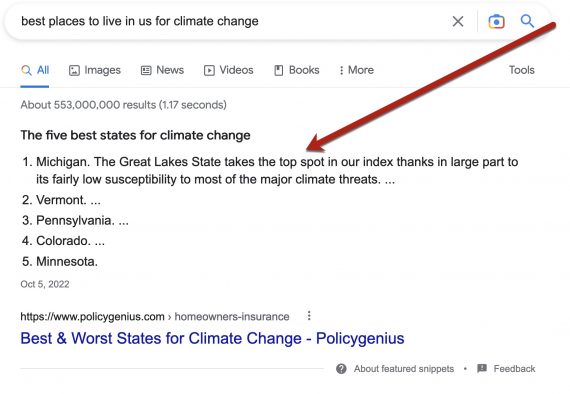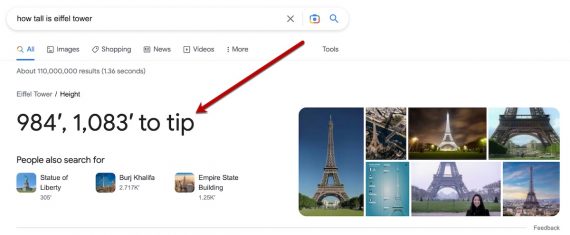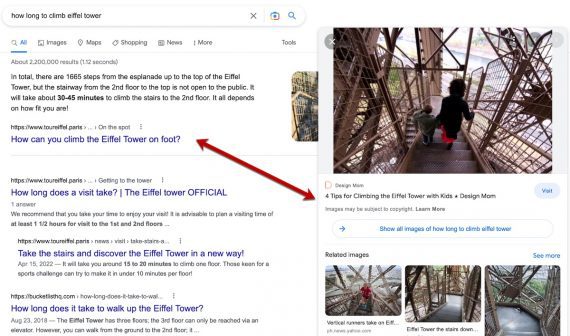Search engine optimizers often use the terms “answer box” and “featured snippet” interchangeably. Both are quick answers or summaries at the top of Google’s organic search results.
And yet there’s a big difference.
- Featured snippets are short answers pulled from what would otherwise appear in the top 10 organic results. Google moves the page to the top of search results with a link underneath.
- Answer boxes are brief factual replies that Google extracts from its own knowledge base, a decade-long project. Answer boxes usually address known entities — names, brands, places.
For example, search Google for “how tall is the Eiffel tower.” The top result is an answer box — a factual response — with no source citation as it’s a known fact.
Next, search for “how long to climb the Eiffel tower.” The top organic listing is a featured snippet, a short paragraph based on the author’s experience, and linking to the source.

Featured snippets are authors’ experiences and opinions and link to the source URL. This example is a reply to “how long to climb Eiffel tower?”
I’m aware of no recent data on the number of clicks from featured snippets, or the number of clicks answer boxes take from regular listings.
But overall, featured snippets are opportunities for publishers. Answer boxes are not.
Featured Snippets
Optimizing featured snippets involves providing concise and factual answers to searchers’ queries. Featured snippets appear as:
- Paragraphs, usually two-to-three sentences, with the answer in bold.
- Lists, bulleted or numbered, in response to a query implying an enumeration.
- Tables, all or part of an HTML table, are rare.

Featured snippets as lists reply to queries implying an enumeration, such as “best places to live in U.S. for climate change.”
Each type of featured snippet can include an image, which may come from a different site, not the featured one. Images within snippets are enlarged when clicked, inviting the searcher to that site — a traffic-building opportunity.
Google pulls those images from its “Images” search results. Hence image optimization can drive traffic from featured snippets.
To increase a site’s chances of appearing in featured snippets:
- Provide many definitions.
- Create page summaries listing factual info — prices, years, names.
- Address popular queries in on-page “frequently asked questions.”
- Use lists and tables when applicable. HTML tables can generate structured snippets.
- Include meaningful and optimized images on each page
To know its organic position when a page is featured, add &num=0 to the URL. This forces Google to generate “normal” SERPs with nothing featured.
Knowing the non-featured organic ranking helps understand:
- The difficulty of replacing a competitor from the featured position. A snippet that otherwise ranks number 1 organically will be difficult to remove.
- The traffic value of a featured position. For example, a featured position is gold if its page otherwise ranks number 6.
Answer Boxes
Answer boxes appear in many forms and styles — lists, numbers, images, and include “People also search for” results.
Answer boxes do not link to publishers. The boxes do not drive traffic and, moreover, are likely diverting clicks. Thus avoid optimizing keywords that trigger answer boxes.
Not every answer box is strictly factual. Some are subjective, such as a reply to “best place to retire in Florida.” That query generates an answer box despite relying on opinions.
Images provide the only traffic opportunity from answer boxes. Thus image optimization is a key tactic for featured snippets and answer boxes.










